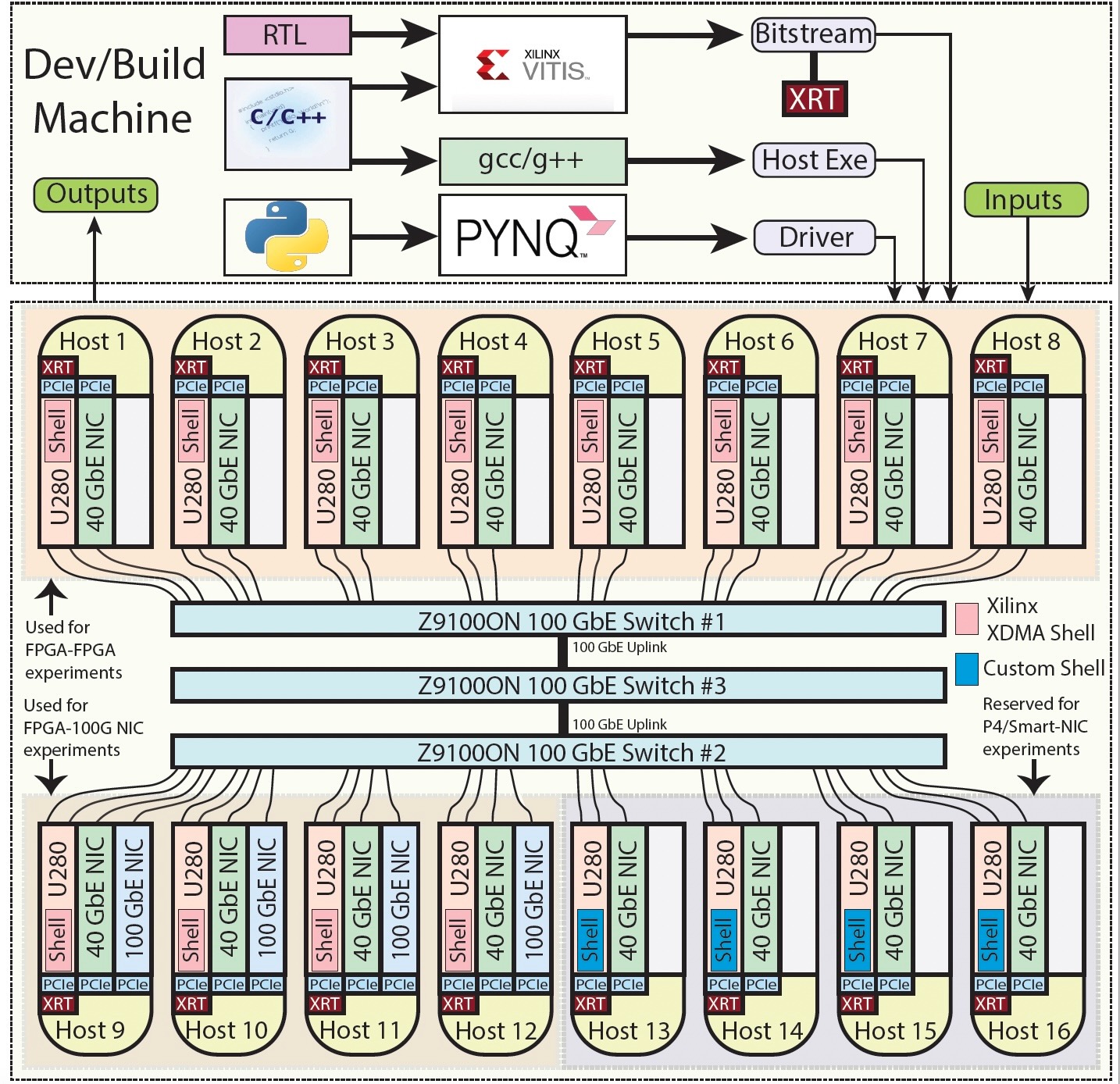The Open Cloud Testbed (OCT) workflow consists of two parts.
1. Development: OCT development tools are hosted on a virtual machine (VM) in New England Research Cloud (NERC). Users can remotely log into this VM and build FPGA bitstreams/host executables using the tools installed on the VM. Alternatively, users may use their own build machine if they prefer to do so. In this case, they will have to install Xilinx Vitis and runtime tools on their machine.
2. Deployment: After creating the bitstreams/host executables, users will use CloudLab for targeting. There are sixteen Alveo U280s in CloudLab Massachusetts cluster which are PCIe connected to sixteen host machines. These U280s are connected to 100 GbE data center switches using QSFP28 passive DAC cables. Four of the sixteen nodes have 100 GbE NICs installed. Another four have been allocated for a P4-enabled SmartNIC testbed.
Currently, OCT has 12xU280s that come with the deployment target platform (xilinx_u280_gen3x16_xdma) provided by Xilinx. This is the communication layer physically implemented into the card. Users will use the Xilinx Vitis workflow to generate a partial bitstream (.xclbin) and program the user partition of the FPGA.
For host-to-FPGA communication, we use Xilinx Runtime (XRT). XRT includes drivers and API functions to communicate with the U280 card and the FPGA. When a user starts an experiment in OCT, XRT is automatically installed on the host node as part of a post-boot script. Once the host node is finished booting up, users can use XRT's API functions to perform tasks like loading the bitstream, reading/writing device registers, initiating memory transfers, etc. Typically, a host program written in C++ or Python is used for this. Manual installation of XRT drivers is not required.
- Log into your account on the NERC VM to develop applications (or use your own build machine). Follow these instructions if you decided to use the VM on NERC.
- Build a bitstream and a host executable.
- Set up a CloudLab node. Follow these instructions.
- Copy the bitstream and executable to the CloudLab node.
- Run the application.
An example is given here.
The workflow is the same as stand-alone workflow except that you select two or more FPGAs when setting up the CloudLab experiment.
An example is given here.
